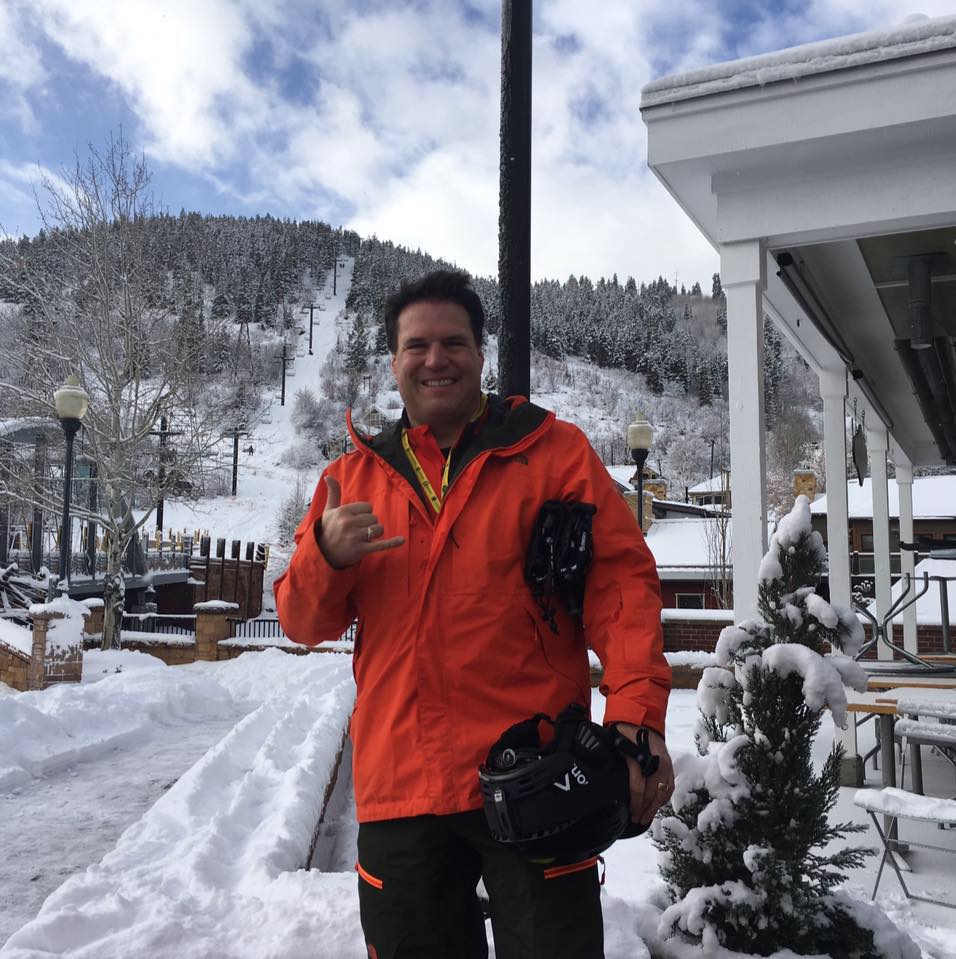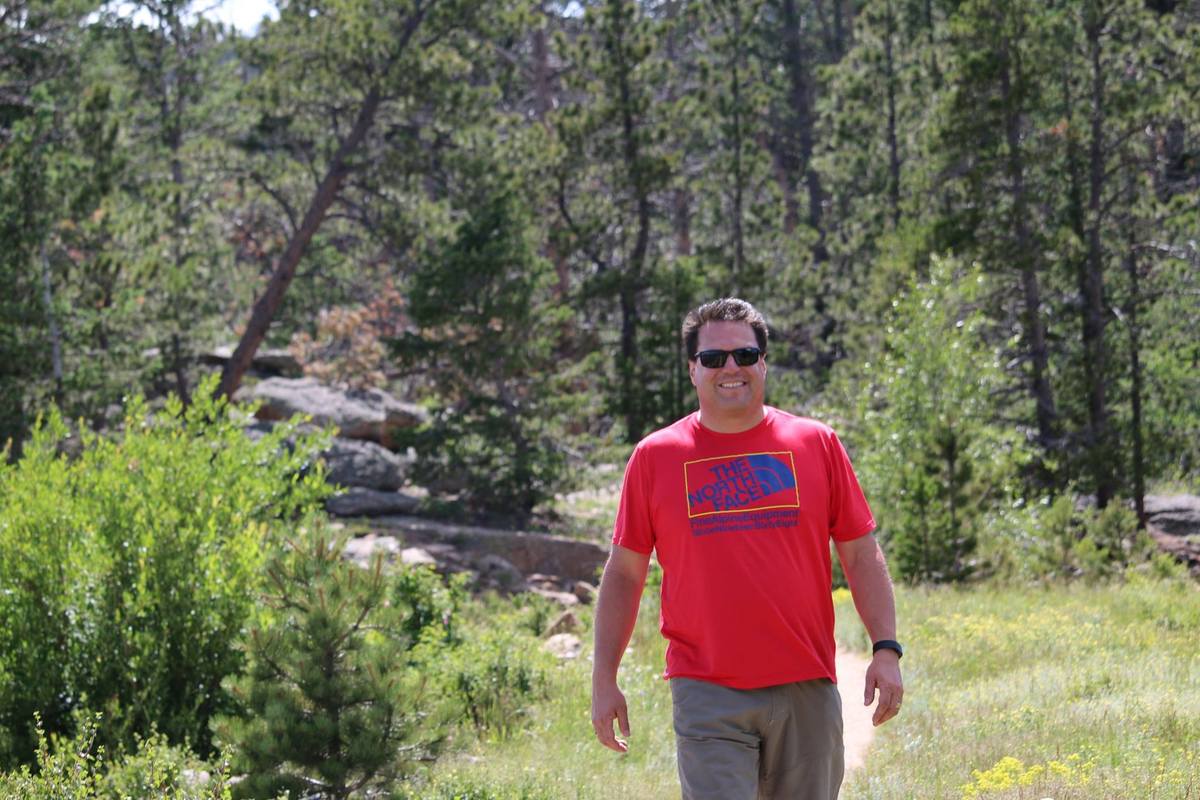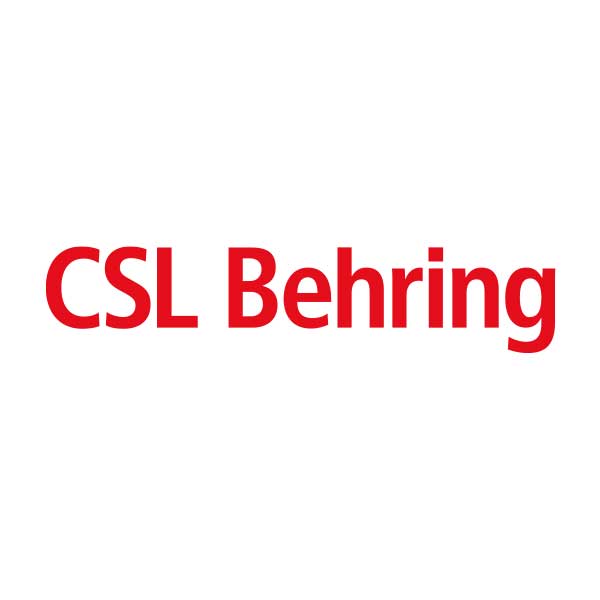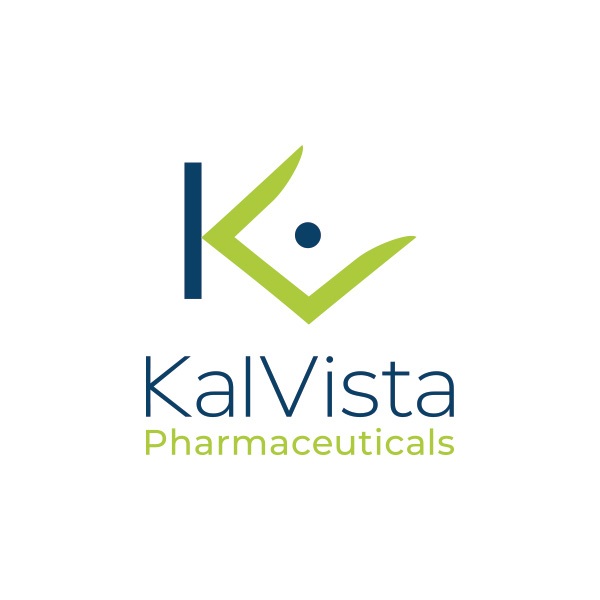Tad Rockwell,
United States (1968)
Tad Rockwell says that getting the right medication has changed everything. “Today I handle my disease, and I am not a victim of HAE anymore.”
I was five when I had my first attack – the first of hundreds. I woke in the middle of the night, my face swollen. My tongue was three inches thick, poking out of my mouth, and the swelling in my throat nearly suffocated me. I shook my parents awake, and they rushed me to the emergency room. The doctors decided the cause must have been a spider bite, but this made no sense to my mom. A spider bite? It’s November in Alaska. The spiders are all frozen, and there wasn’t a mark on my body. I was treated with antihistamines and stayed in the hospital until the swelling subsided but other than that there was no treatment – or research into what had caused the swelling.
That attack happened more than 40 years ago, but I remember it like it was yesterday, because it was really scary. You have got to understand, I was not your normal kid. By the time I was five I was an advanced skier; by my teens, I was an extreme skier before there was such a thing as extreme skiing. I was dropping down avalanche chutes and jumping off 70-foot cliffs.
Altogether you have been doing quite a number of things one wouldn’t expect of a HAE patient.
Well, to mention just one I was a commercial fisherman, working 70 hours a stretch on rough seas and chasing bears away from our fishing nets. Throw in the fact that I also played football for 11 years. In my mind, nothing on this planet could knock me down. This was my mindset despite the fact I suffered scattered abdominal attacks throughout my childhood and teen years. Attacks so painful it felt like someone scraping a broken bottle through my intestines.
When were you diagnosed?
It was kind of a fluke. When I was 23 my hand was swelling pretty bad, and I went to a local walk-in clinic. Once again it was suggested that it could be a spider bite and as it went away after a few days nothing more was done about it. However, 30 days later it came back in the exact same place and in the exact same way, so I went to the same walk-in. By chance, I ran into the same doctor, and he suggested we do a blood test – and that led to the diagnosis HAE type 1. The doctor simply explained there was no treatment and prescribed me antihistamines as he told me he really didn’t know what else to give me. Then, he sent me on my way with this advice: “If your throat swells, go to a hospital.” To me, that was common sense, so I dismissed the whole thing. There was nothing to be done! At the time, the swelling was occurring only in my hands, and the pain was inconvenient, not incapacitating. So my reaction to the diagnosis was: “Who cares? There is nothing on this planet that can knock me down”. So, I continued with my nothing-can-stop-me attitude and lived my life in denial of the true nature of my disease.
But then the attacks got more severe.
Yes. Fresh out of college I moved to California to start a career in business, and it was there I met my soul mate and soon-to-be wife, Wendy. As the years went on, I advanced in my career and started a family. It was during this time that the attacks became more frequent and more severe. In the 10 years following my diagnosis, I suffered hundreds and hundreds of attacks in my hands, arms, feet, legs, and scrotum. During this period, I tried steroids. This slightly reduced my number of attacks, but I also developed a personality that almost caused an end to the most important relationship in my life. I decided the side effects weren’t worth it, and I stopped taking steroids. I told myself: “I’ll be fine. It’s no big deal. And there’s nothing to be done anyway.” Denial becomes a useful tool in dealing with a disease when there is no treatment available.
Along the way, you found out that you might be triggering the attacks yourself?
Well, as my job responsibilities grew and two kids came along, my stress level went through the roof. It turned out that for me stress was the main trigger for HAE attacks. And this time around, the attacks turned to my abdomen. Over the next three years, I experienced more than 70 abdominal attacks, and I gained an entirely new definition of pain. In my life, I’ve dislocated my shoulder more than 30 times, shattered my hand, smashed my face, surfed with a fractured collarbone, and skied on a broken leg. On a pain scale from one to 10, I’d say a broken bone feels like a two. At my seven, I’m hyperventilating and on the ground not able to speak or communicate. At eight, I’m screaming uncontrollably, vomiting and gagging. At nine, I’m not a human anymore. I experienced a nine many times during these three years, and I wound up in the emergency room more than 40 times.
They must have gotten used to treating you there?
Not really, no. In most of the emergency rooms I walked into, the staff saw my HAE symptoms and thought I was a drug seeker. In the best cases, I endured countless tests and CT scans and was given antihistamines or steroids. But more often than not, I experienced neglect and even outright abuse. The attacks could last anywhere from six to eight hours, and I would spend most of that time in the waiting room, screaming and vomiting. Sometimes, I’d crawl into the restroom and lie in god-knows-what for hours, crying and vomiting – but at least then I could escape the stares. I have even been thrown out of emergency rooms to work through my attacks alone in the grass or bushes in front of the building. Eventually, I couldn’t take it anymore, and I just stopped going to the hospital.
Obviously, that didn’t mean the HAE attacks stopped. They were relentless. If they happened in the car, I would have to pull over on the side of the road or freeway for hours, and pray no one would find me. They would strike at my kids’ soccer games. Anywhere I happened to be, as soon as I sensed an attack, I would search frantically for a dark place to lie on the ground so I wouldn’t injure myself or scare others. Twice, the police and paramedics came to my house because the neighbors heard my screaming, and they literally dragged me gagging and writhing out of the house while I was having an attack. My kids got to watch all this happen. My wife got to watch all this happen.
Have your experiences with hospitals been all lousy up until you found the right medication?
A vast majority have been. However there were some exceptions, there was one time I was in New York City for a few days of meetings, and my throat closed at the airport as I was boarding a plane. At that time I had gotten in contact with the US HAEA via the hotline. I was told to go to Mount Sinai Hospital. I called them, went there, and the doctor came and met me in the emergency room. That is probably the busiest emergency room you can imagine right in the middle of Manhattan but never the less they knew my name when I walked through the door. Within 10 minutes I was getting an effective treatment that stopped my attack quickly. That was the first time I experienced knowledge about HAE in an emergency room. That was a positive experience and one that probably saved my life.
How have you been coping with HAE when it comes to working?
I worked for many years in the automotive industry helping companies re-build their businesses, streamline operations, and make them more profitable. I have done this with many companies over the last 20 years. However, back in 2010, I realized that my career kept me so busy that I didn’t have time to spend with my children, wife, friends, and family, and that travel had become pretty much just for business. So while in the past, I was making good money my home/work balance wasn’t what I wanted it to be. Today I work from home with good people who are like-minded, thus achieving my goal of balance, fun, and healthy passive income. I help people build greatness in their organizations, and in themselves. Without this flexibility in my job I am pretty sure I would have been unemployed, and before the right medication, unemployable with a wife and two children. I chose to change my lifestyle and profession to fit my needs, my health being a major component of that.
Talking about family: You had your wife and kids, but from a HAE perspective you were pretty much alone in the world?
Yes. From the time I was finally diagnosed at 23 until I was 44 – that is a little more than 20 years – I visited more than 20 different doctors, none of whom specialized in HAE and none who could help me. I didn’t know a single person on the planet who had HAE. I was truly alone and completely overwhelmed by the disease, and the thought that “nothing can be done” ruled my life and kept me from doing anything about it. From attack to attack, HAE owned me. I didn’t own it.
In my late 30s, the abdominal attacks eventually subsided to the point where I could get back on my mountain bike. One day, one of my mountain-biking buddies mentioned he had heard about a new drug on the market that might be able to help me with my attacks. I remember exactly what I said to him: “There’s nothing on this planet that can help me except me.” To me, this meant watching my diet and exercising more – doing all the things that helped my body cope with stress. This was the only solution I could see even though there were actually new and effective solutions around me. I just didn’t think they would be able to help me.
And then came what you describe as your wake-up call. How come?
During a vacation to my in-laws, two hours away from my house, my face swelled uncontrollably and then dropped into my throat, and it became clear that I needed help. I didn’t want to go to a hospital I had never been to. I wanted to go to the hospital by my house, so Wendy and I quickly packed our bags and we left for the two-hour drive home. We stopped for gas, and while there, my throat started closing like a vise and all I could think was: “Oh my god, I’m going to die at a gas station. I’m going to die and my wife and children are going to watch it happen. All because I didn’t handle this disease responsibly.” It was truly frightening. Those dark days and years of not respecting this disease had finally come to a head. It was pretty obvious that I had to change. Like right now. Or never.
Wendy immediately drove me to the emergency room of the nearest hospital, where a doctor actually listened and moved on what she heard. She had drugs brought in, and I was immediately moved to the intensive care unit. At this point, Wendy had had enough. For years I had been telling her that there was nothing anyone could do for me and that even the US HAEA couldn’t tell me anything I didn’t already know. She was tired of hearing it, and she took a stand and called the US HAEA hotline. Lois Perry from the US patient organization immediately connected with the hospital and provided critical instructions for treatment.
And after that, you kept in contact with US HAEA?
I did. After I got out of the hospital, Lois really fought for me. Over the following weeks, US HAEA helped me find the right doctor and get to the right medication. Lois connected me with an HAE specialist 20 minutes from my house. This blew my mind! I had felt so alone for decades, and all along there was an HAE specialist treating HAE patients 20 minutes from my house?! A couple of days later, when Wendy and I visited Dr. Levy, he told us there were at that point four treatments available. So kindly but firmly, he told me I was in denial and that I was going to leave my kids without a dad if I didn’t get responsible with this disease. As soon as the words, “No, I’m not,” slipped from my mouth, I knew. I had been in denial all along. I would have continued down that path if not for the people who made a stand for me when I wasn’t willing or ready to make a stand for myself: my wife, my US HAEA advocate, and now, Dr. Levy. He is the one who started me on the path to effective treatment immediately and aggressively.
I know that you did quite a lot of research regarding HAE – among other things on the Internet – but you never came across US HAEA back then?
Well, as a matter of fact, I did. The US HAEA had a pretty static website back in the 90’s. I guess I thought that it was good to know that there was some sort of organization but as there was no medication available at that time I didn’t join. And when Wendy finally contacted US HAEA, I hadn’t looked at the website for 10 years as I had already decided that there was nothing that they could do for me.
And now your use of US HAEA is different from before?
Absolutely. Following the eye-opener, I got to know a few people from the US HAEA staff, and since then my HAE family has grown quite a bit. Among other things, I have attended the national summits arranged by US HAEA. I also took part in the HAE Global Conferences in Madrid in 2016 and in Vienna in 2018 – and together with Wendy I participated in the first HAEi Camino Walk in northwestern Spain to promote hae day :-)in May 2016. Today there is no doubt in my mind: US HAEA and HAEi are the best ways to connect.
And how is your situation now – do you still have frequent attacks?
Since I started participating in the clinical trial for a plasma-derived C1 Esterase Inhibitor for subcutaneous injection things have been very different. Today it is one of the six medications available to HAE patients in the United States, and I am grateful for the treatment that I have today. I can’t tell you how it makes me feel to have a therapy like this helping to manage my disease – and even to have it for self-administration. Everyone is different, but for me, I haven’t had a severe attack in – well, years now. Some people have experienced injection site reactions, hypersensitivity, and dizziness but for me, there have been no side effects. However, there could very well be side effects for other HAE patients, so naturally, it is very important to talk to your doctor and make your own plan for treating your HAE before you start on a new medication.
Based on your experiences what are your recommendations to other HAE patients?
First and foremost, it would be not to let HAE rule your life as it did mine for decades. Don’t live in denial about what’s going on – get diagnosed and get treated. No one has to suffer. No one ever again has to have this kind of story about HAE. Don’t let this disease limit you. Don’t ever settle for normal when it’s possible to choose extraordinary. Most people with a rare disease simply want to live what they call a normal life. For decades, I lived in denial of my HAE, and because of that, I lived a nightmare. I endured hundreds of painful attacks, many of which threatened my life, before choosing to find a way out. Now, I am here to say: You don’t even have to settle for a normal life. You can choose the life you want.
So to summarize: How is your life now compared to the one you lived for years?
My life has changed. Getting the right medication has changed everything, really. Today I handle my disease, and I am not a victim of HAE anymore.
I know now that, along with my healthcare team, I’m 100 percent responsible for managing my disease and managing my mindset. It took me nearly 40 agonizing years to come to this realization. Eighteen years passed from my first attack at age five to my diagnosis, and nearly 20 more years of denial passed between diagnosis and effective treatment.
Now that I’ve taken a stand for myself, for the first time ever I love my life, and I love the person I’ve become. I’m living my life on my terms, focused on doing the things I love with the people I love. Like skiing with my daughter, Julia, and my son, Thomas, or hiking with my wife. And I seriously feel like I’m just getting started. There’s still a lot I want to do and a lot of places in the world I want to explore.
You mentioned that throughout the years you have dislocated your shoulder, shattered your hand, smashed your face, and surfed with a fractured collarbone. There is a more recent incident.
Certainly! In March 2018 I had a ski crash that resulted in a severe injury to my right knee. However, the experience was entirely different than the previous ones: For the first time ever an HAE attack was not the first thing on my mind after the incident. It only occurred to me days later that due to the medication I have now there was no attack. This is extraordinary in my mind! I can ski 500,000 vertical feet in one winter season, have a horrible crash, and not think about HAE or worry about an attack? Game on!
https://haei.org/hae-member-countries/united-states-of-america/
HAE related topics that might interest you
Global Perspectives
Magazine with timely information on the issues, activities, and events that are relevant to the global HAE community
HAEi Advocacy Academy
Courses, advocacy training, and tools to support people living with HAE and becoming an HAE advocate
HAEi Connect Member database
Free, secure online membership database and communications platform for HAEi’s member organizations
HAE Companion app
Access to HAEi’s emergency card in many languages and ACARE Centers, HAE knowledgeable hospitals and physicians
Stay tuned – sign up for our newsletter
BE THE FIRST TO KNOW ABOUT HAE NEWS, TREATMENTS, EVENTS AND RELATED TOPICS




















